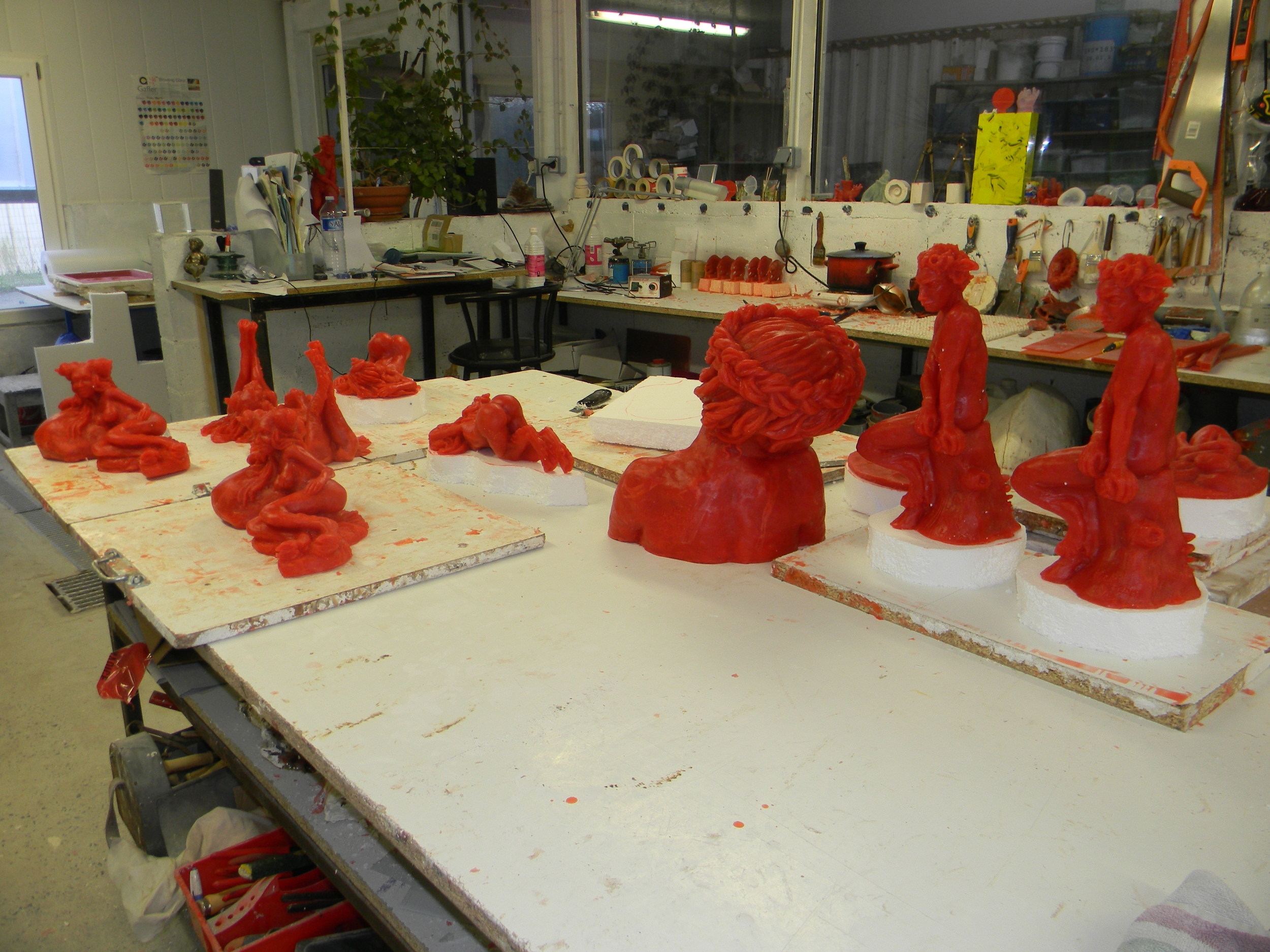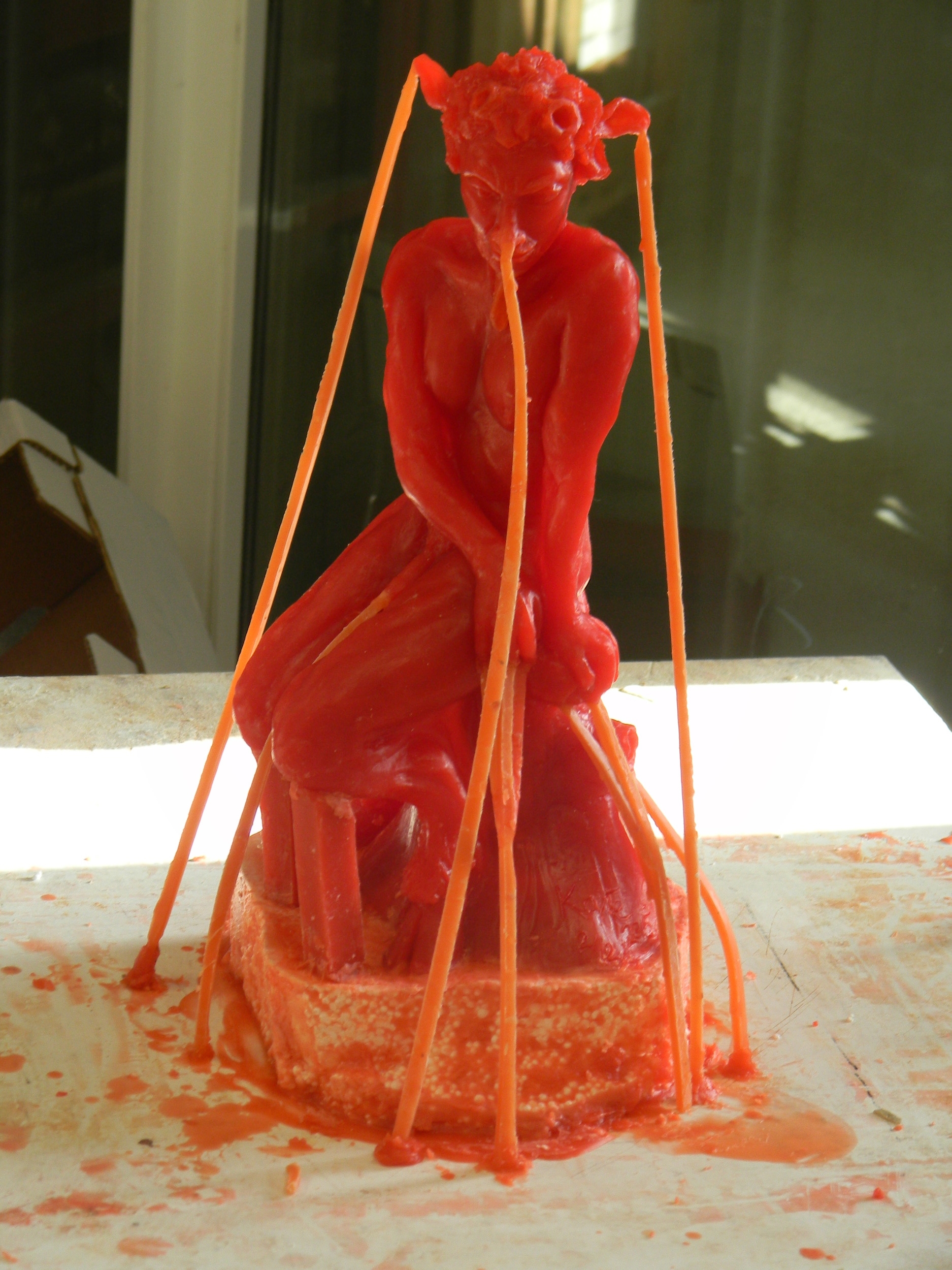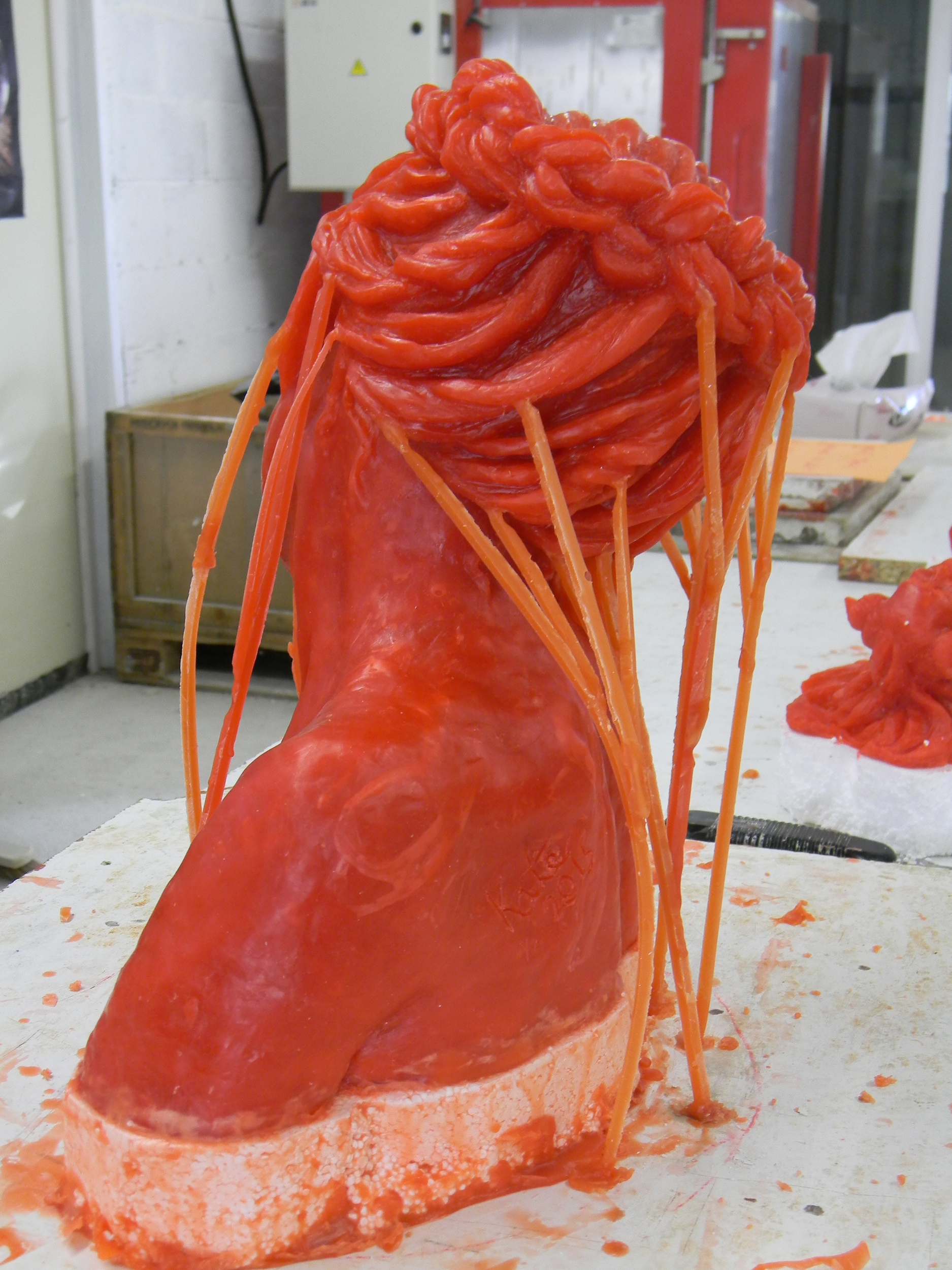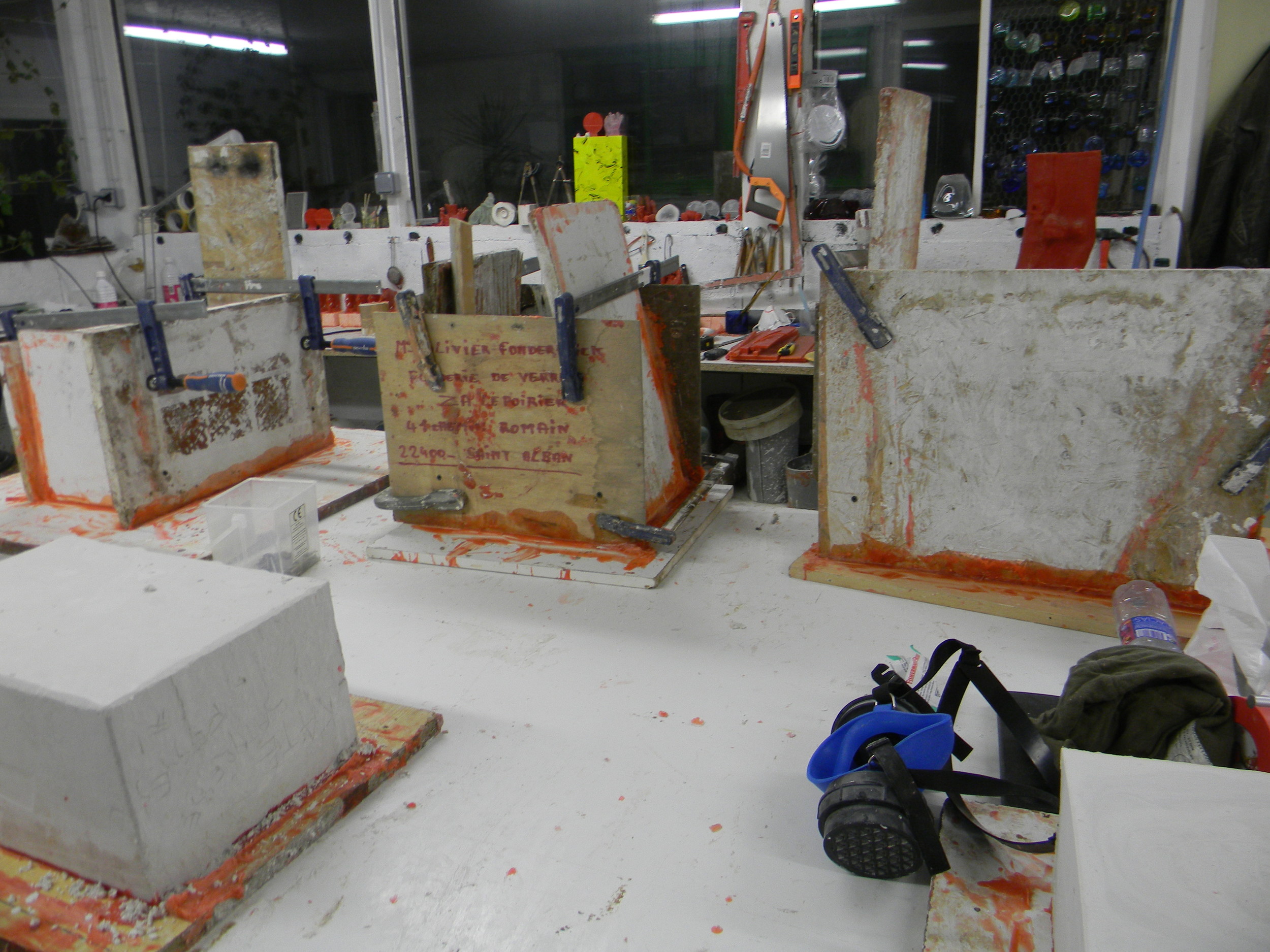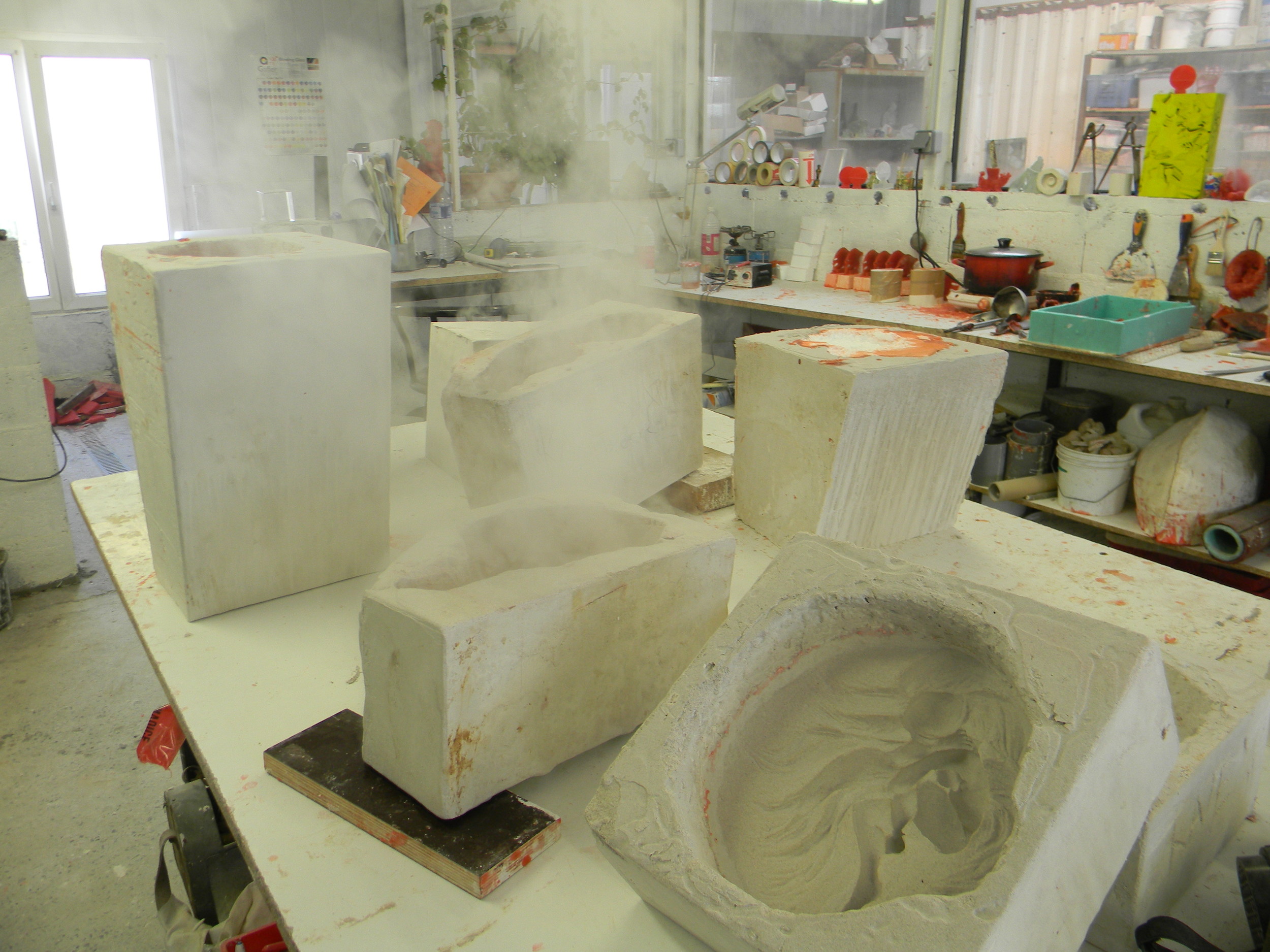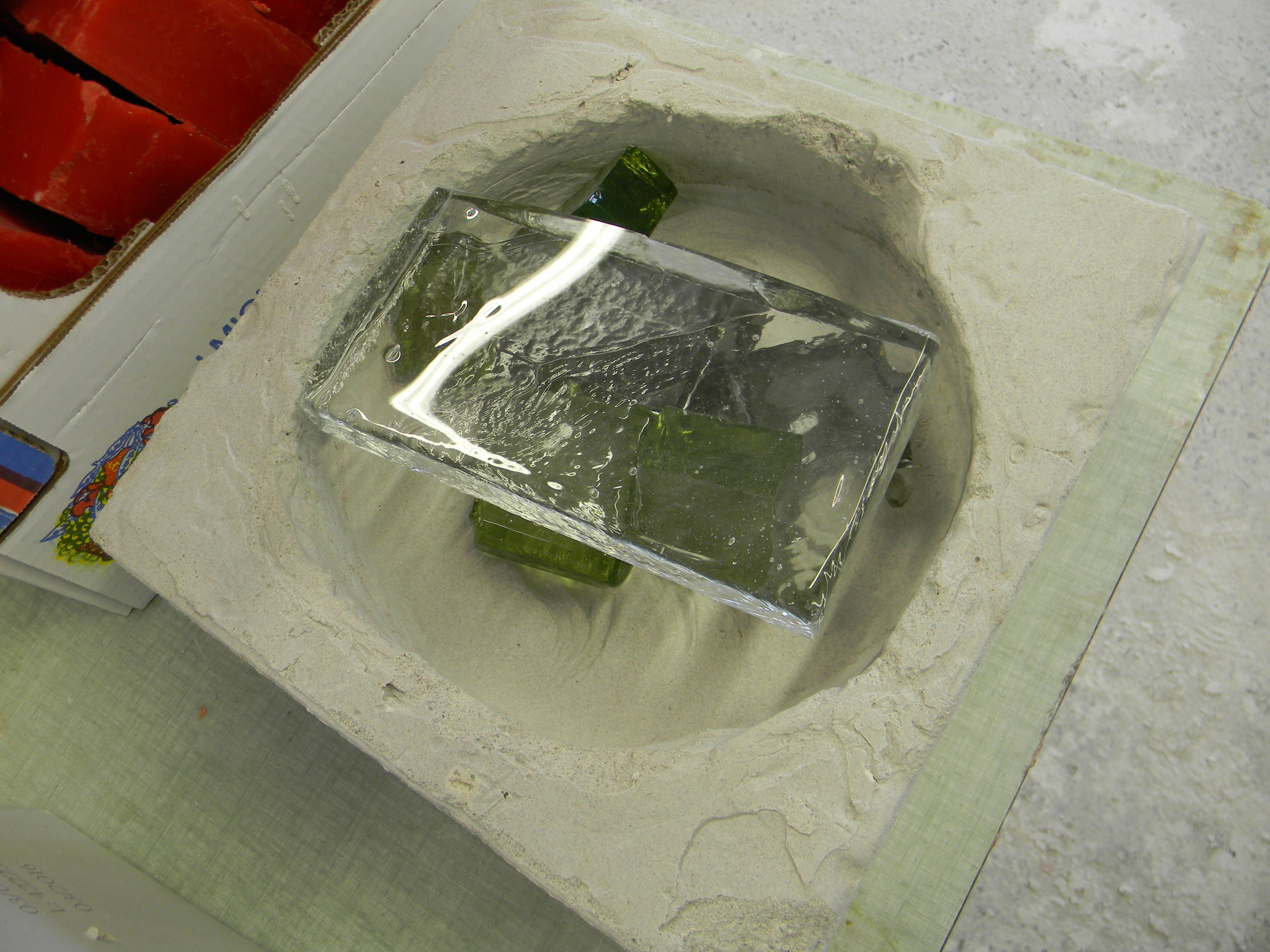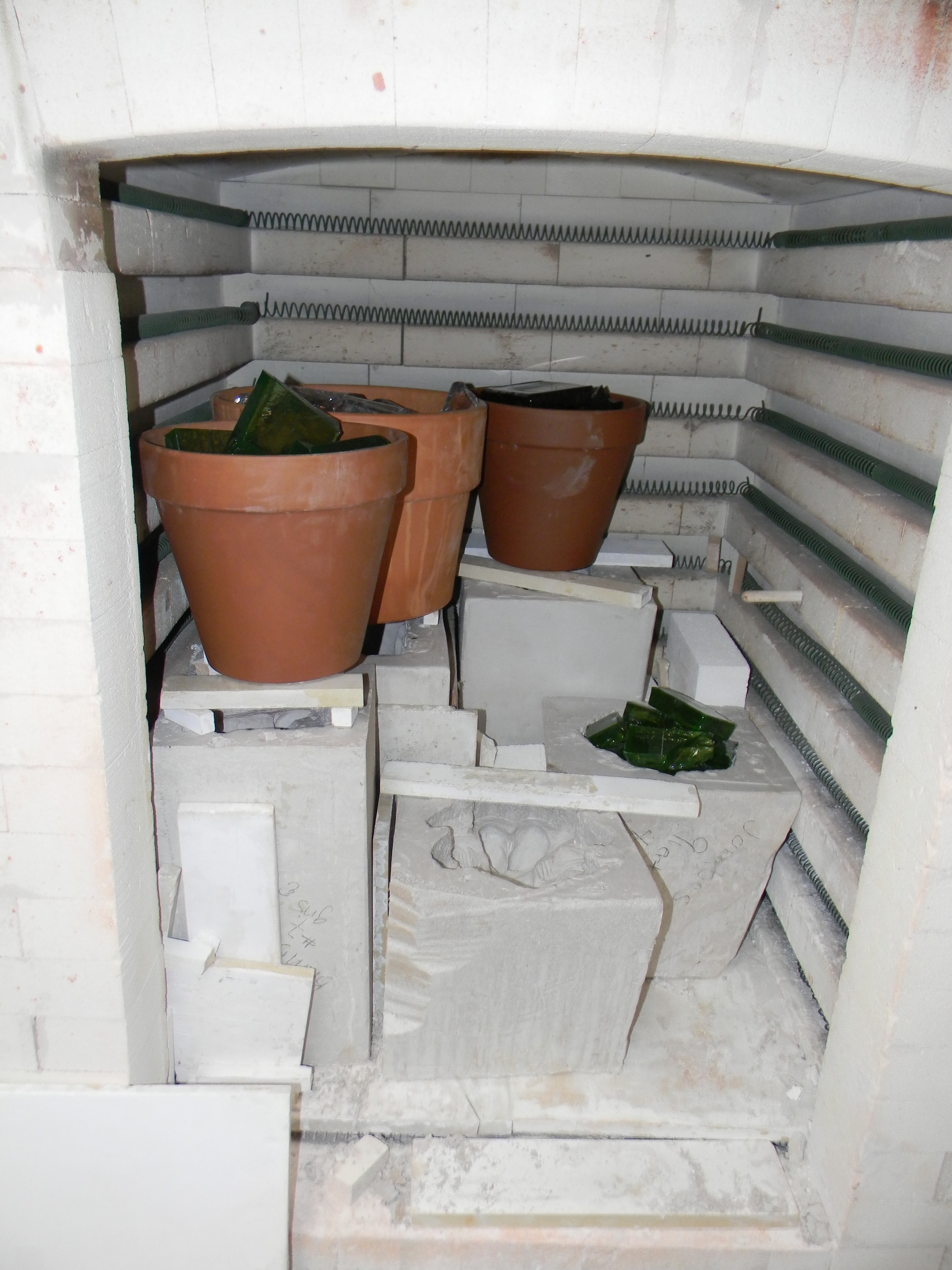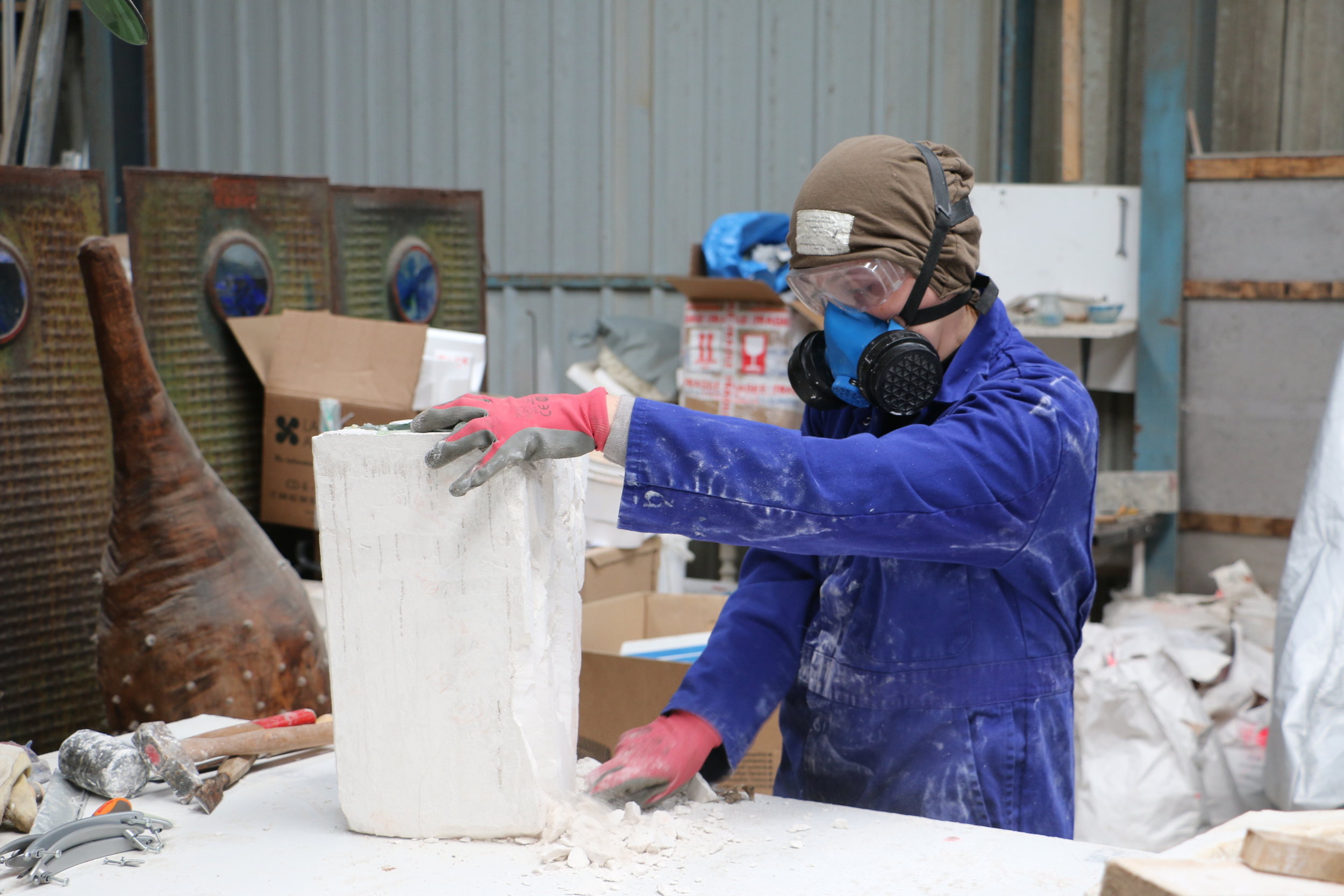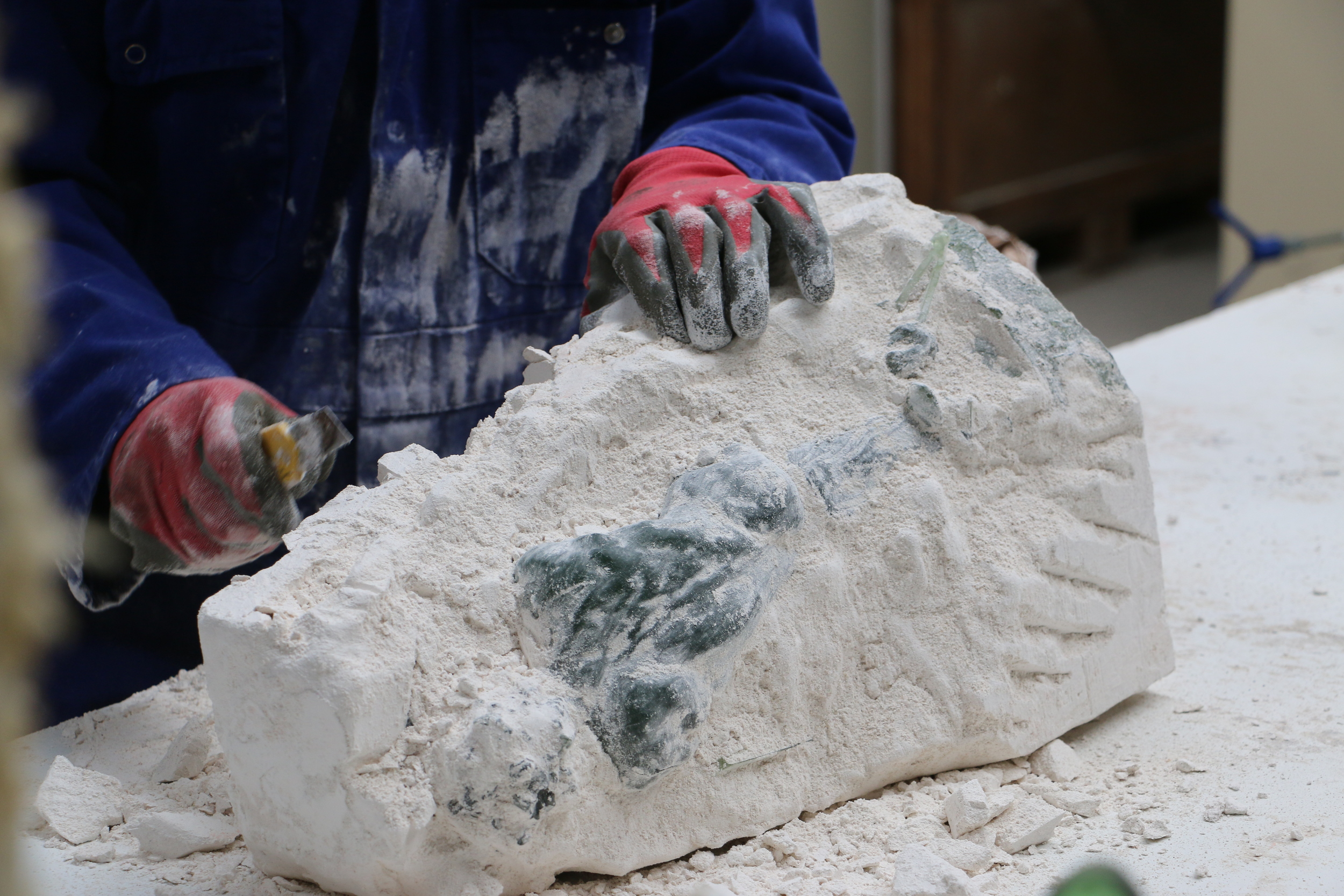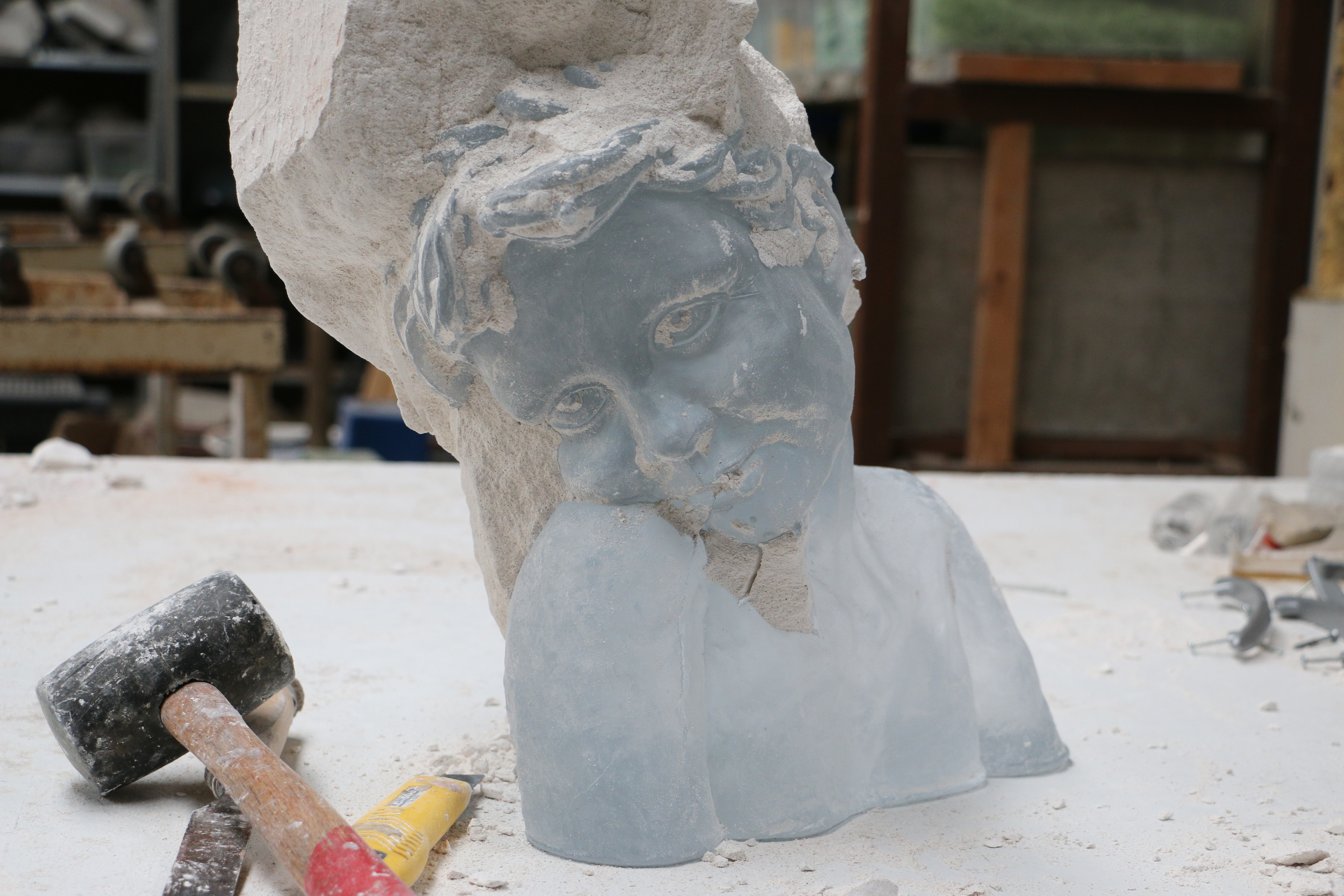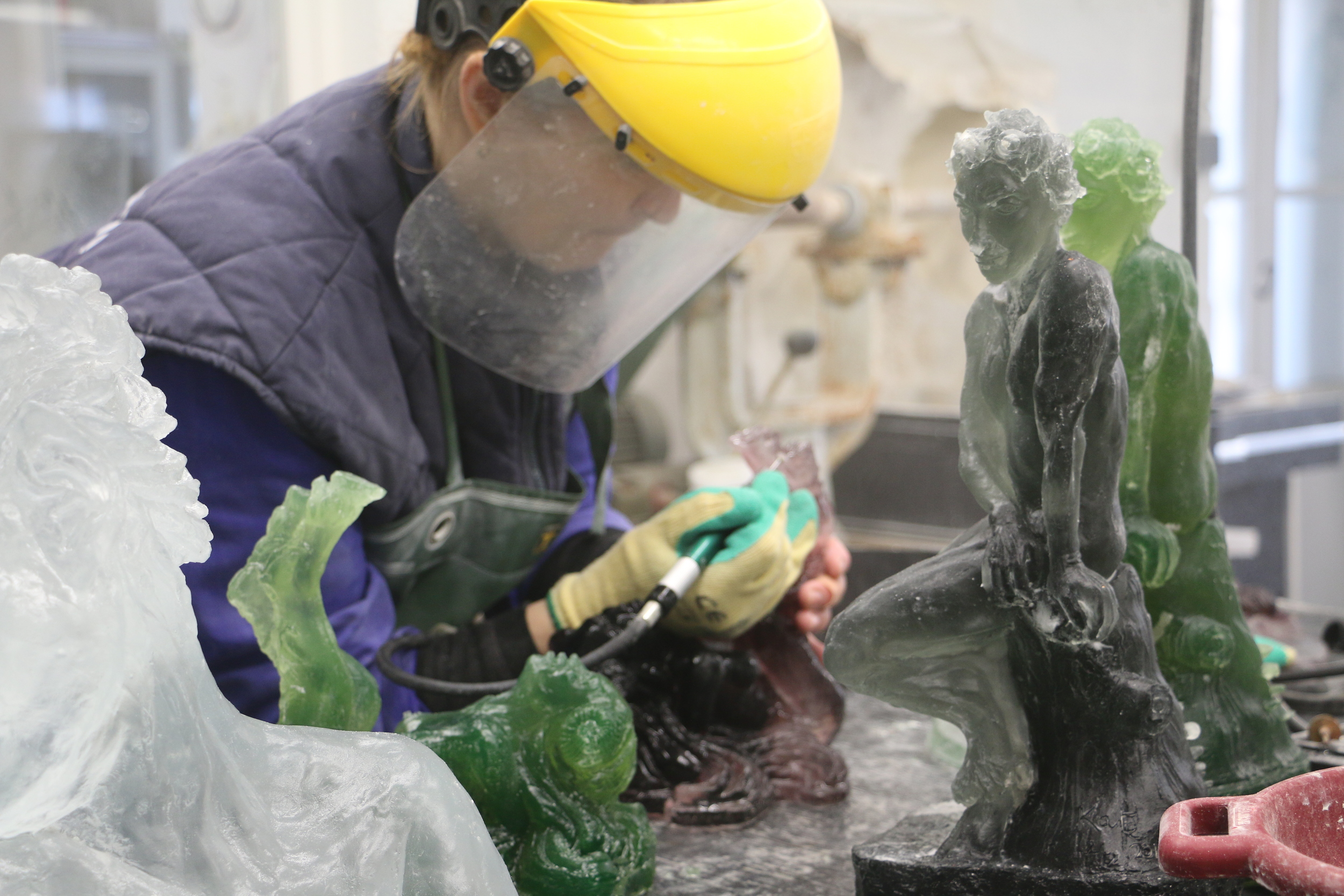CAST GLASS PROCESS
Kiln cast glass - though not common - has been around since the Egyptian period, and in my case it involves melting glass into a plaster mould where it solidifies into exquisite and irresistible works of art. This is also a highly technical process over which you often feel you have little control, and the end result is a miracle in itself. Hence the attraction. If you have a moment, feel free to read a quick resumé below on the exhaustive process, if for no other reason than to gain an appreciation of the marathon of sweat, time and patience that goes into each piece. Totally worth it.
- SCULPT ORIGINAL OUT OF CLAY
- FIRE CLAY
- CREATE SILICONE MOLD OUT OF ORIGINAL CLAY
- POUR A WAX COPY USING YOUR SILICONE MOLD
- RE-FINISH THE WAX DUPLICATE
- FUNNEL AND VENT THE WAX DUPLICATE TO AVOID TRAPPED AIR BUBBLES IN THE CASTING PROCESS
- CREATE AN INVESTMENT PLASTER MOLD USING THE WAX DUPLICATE
- MELT OUT THE WAX, THEN CALCULATE AMOUNT OF GLASS TO BE USED IN CASTING
- PLACE INVESTMENT MOLD AND GLASS INTO KILN
- CALCULATE KILN FIRING TIME AND TEMPERATURE SETTINGS BASED ON SIZE AND SHAPE OF THE INVESTMENT MOLD
- PRAY
- RETURN 15-24 DAYS LATER, REMOVE THE CAST GLASS OUT OF THE INVESTMENT MOLD USING CHISELING TOOLS ETC.
- CLEAN-UP THE CAST GLASS USING DRILLS, SAND PAPER AND OTHER EQUIPMENT
- FINISH THE CAST GLASS SCULPTURE WITH ANY BRONZE ADD-ONS, WAXES ETC.
To see more about the cast glass process, please contact Olivier Fonderflick at his glass foundry in Brittany, France.
